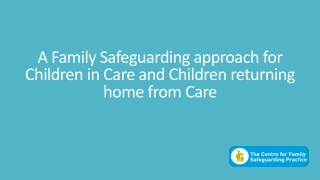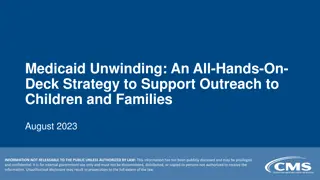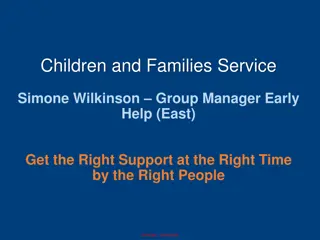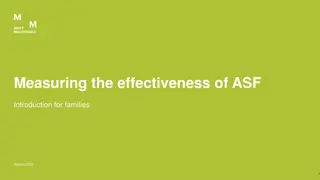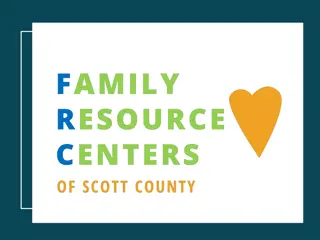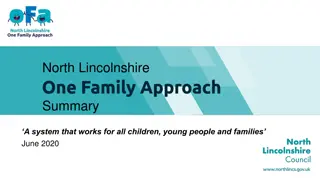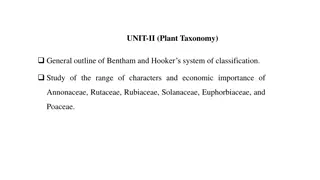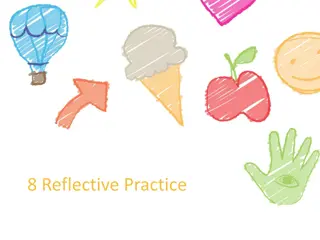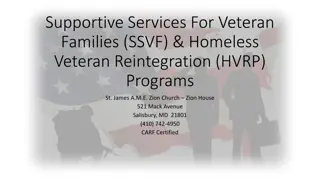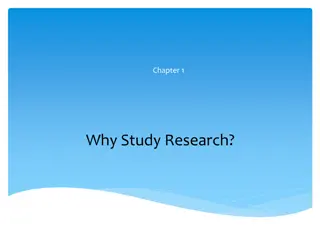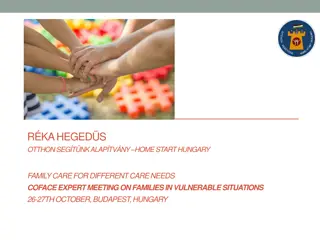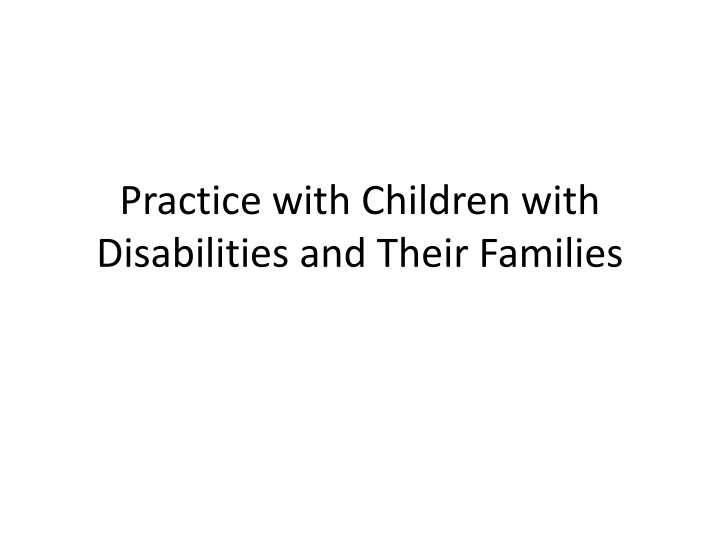
Strategies for Working with Children with Disabilities and Their Families
Enhance your understanding of psychosocial adaptation stages and determinants for individuals with disabilities. Explore effective interventions and principles of disability practice to provide optimal support and care for children with disabilities and their families.
Download Presentation

Please find below an Image/Link to download the presentation.
The content on the website is provided AS IS for your information and personal use only. It may not be sold, licensed, or shared on other websites without obtaining consent from the author. If you encounter any issues during the download, it is possible that the publisher has removed the file from their server.
You are allowed to download the files provided on this website for personal or commercial use, subject to the condition that they are used lawfully. All files are the property of their respective owners.
The content on the website is provided AS IS for your information and personal use only. It may not be sold, licensed, or shared on other websites without obtaining consent from the author.
E N D
Presentation Transcript
Practice with Children with Disabilities and Their Families
Psychosocial Adaptation Stages 1. Shock, disbelief, and denial 2. Anger and resentment 3. Bargaining 4. Depression and sorrow 5. Acceptance or identity change
Determinants of the Psychosocial Adaptation 1. Antecedents: e.g., the cause of the disability, prior knowledge or expectation of the disability, prior experience to disability and with PWDs, etc. 2. nature, severity and disability-related factors: e.g., type of the disability, degree of its severity; 3. personal factors: e.g., spirituality, age, personality, resources having, etc.
Determinants of the Psychosocial Adaptation (cont.) 4. Family characteristics: e.g., family history, the person acquiring the disability in the family, marital relationship between the father and mother, the responsibility parents take, siblings' acceptance and relationship. 5. Other environmental factors: e.g., existence of support systems, acceptance or rejection of the disabled person and his or her family members in the society, the school environment if the disabled member is a child, other cultural and religious practices, social networks, existing policies and practices as well as the presence of social welfare institutions or rehabilitation services, the presence and role of professionals.
Interventions 1. Information, psycho-education, and training in care-giving 2. Counseling at individual or group levels, establishing support groups or communicating the family with other families who have similar cases, sibling counseling 3. Other psychosocial supports since parents with disabilities may have very restricted social participation 4. Housing and transportation services as they can experience great difficulties to find disability-friendly housing/houses (particularly for renting) and vehicles/transportations.
Interventions (cont.) 5. Referral and/or case management 6. Financial support or finance related interventions 7. Provision of assistive devices and other technology-related interventions as well as medical care if required 8. Advocacy 9. Developmental intervention in the child's physical, social, emotional, speech and language, and cognitive developments. 10.Education-related interventions
Principles of Disability Practice 1. Each individual is unique and any intervention should be an individualized process 2. Any practice and rehabilitation service should be provided as early as possible (ASAP). 3. Any intervention/support should adopt a right based approach and empowerment perspective. 4. Any intervention should be provided in an inclusive setting and as close to their families and communities as possible.
Principles of Disability Practice (cont.) 5. No matter how an individual has severe or profound or multiple disabilities, each disability practice should respect the inherent dignity of people with disabilities and should know that they are equally dignified as other members of a society 6. Any practice should acknowledge the right to self-determination and consider PWDs as independent, autonomous citizens who should guide the involvement and the role of professionals in their lives
Principles of Disability Practice (cont.) 7. Disability practices should empower PWDs to lead personally fulfilling, socially meaningful, functionally independent and economically self- sufficient lives and thereby improving their quality of life. 8. Any disability practice should take personal strength, local cultures and local and personal resources in to account. 9. Any disability practice should identify and remove barriers including attitudinal, physical, institutional, communication and other barriers
Principles of Disability Practice (cont.) 10.Any disability practice should take all needs of PWDs in to account and the intervention must be comprehensive in scope and holistic in nature. 11.Any practitioner should raise his/her knowledge to the most updated knowledge in the field 12.Services must be designed to suit the needs and schedule of the disabled child and family rather than the service providers desire and schedule.
Principles of Disability Practice (cont.) 13.Social workers have to be continuously critical and self reflective about their ableist attitudes and practices in working with PWDs and their families 14.Social workers have to know how to properly communicate with PWDs and use neutral languages which do not derogate the dignity of PWDs.
Principles of Disability Practice (cont.) 15. Social workers have to recognize that PWDs are capable and have potentials. They have a responsibility to identify people's strengths and potentials, then collaborate with disabled individuals to develop and maximize their strengths. 16. The primary emphasis of intervention with PWDs must be social and political in nature as there are multiple socially constructed facts in disability and socially created barriers to PWDs and society. 17. Practitioners should recognize that there is joy and vitality to be found in disability.

